NORTH WALES COAST RAILWAY:NOTICE BOARD
Rheilffordd arfordir gogledd Cymru: Hysbysfwrdd
12 April 2021





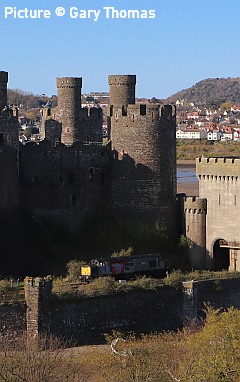
Forthcoming events
(see also our Calendar page for venues)
Note: we have removed all entries relating to meetings as the events are cancelled.
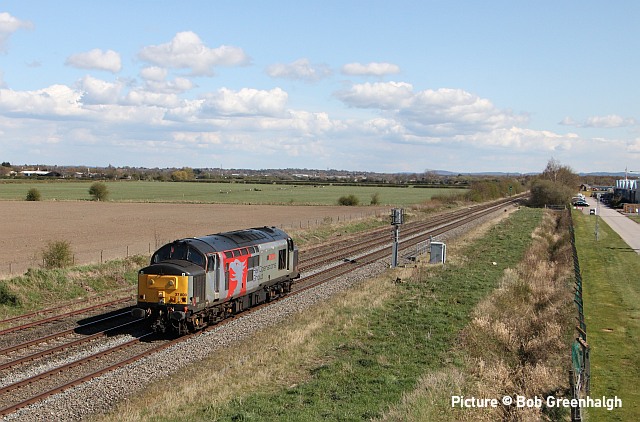
37 800, hired from the Rail Operations Group. on a route learner from Crewe to Holyhead is seen at Beeches Farm on its outbound run, 12 April. Picture by Bob Greenhalgh (It is now legal for English people to enter Wales.) These runs may be in preparation for the re-start of stone traffic from Penmaenmawr with one 'jumbo' train of empties and two loaded runs per day, six days a week from 17 May, with GBRf traction.
Thanks as ever for all the contributions - some have had to be held over to next time due to time pressure.- Charlie
TfW's VIP special - report by Jim Johnson
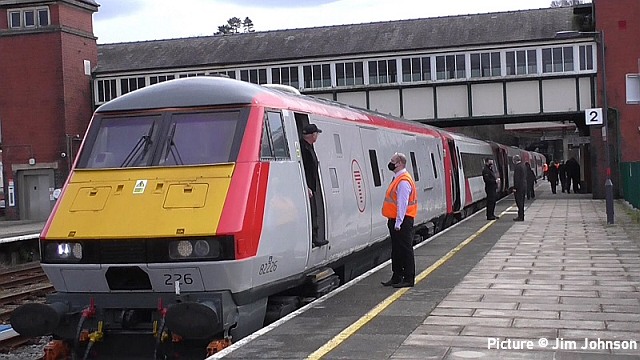
On Thursday, 8th April, 2021, Transport for Wales ran a special from Cardiff to Holyhead and back, conveying TfW 'bigwigs' and others. It ran as 1Z48 07:17 Cardiff Central to Holyhead, and 1Z49 12:39 Holyhead to Cardiff Central. It was late at Bangor in both directions. DVT 82226 led in the down direction, with 67 017 at the Chester end. Above, at Bangor station, Driver Dave Trains is informed by one of the on-board officials that no platform is available at Holyhead, and the special would be routed into the
sidings there.
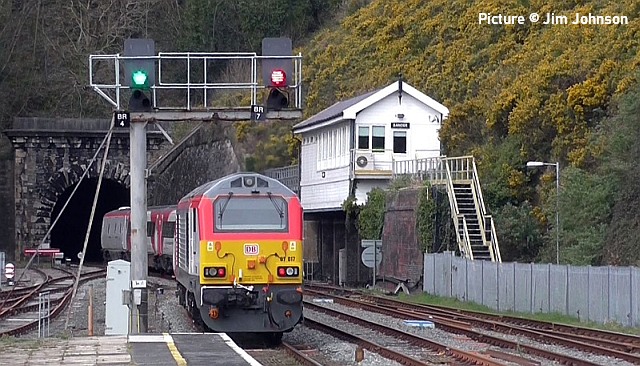
Departure from Bangor at 12:11, 21 minutes down.
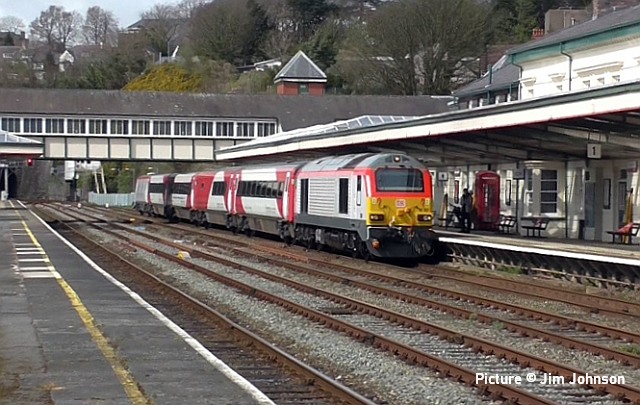
The return working, 1Z49, arriving into Platform 1 at 13:15, 10 minutes
down.
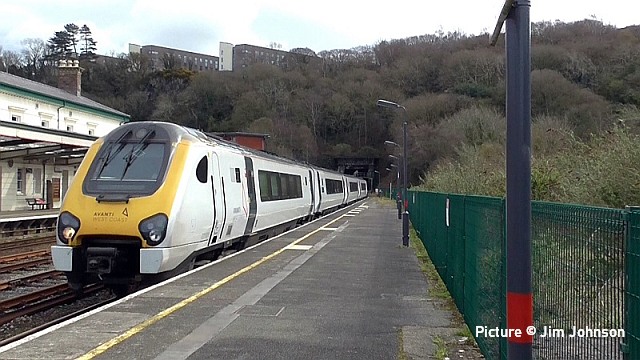
In between the down and up workings, Avanti-liveried 221 101 101
Squadron and 221 102 were on 1D83 10:49 Crewe-Holyhead, 11 minutes late.

Two views by Gary Thomas of the northbound train passing Penmaenmawr.
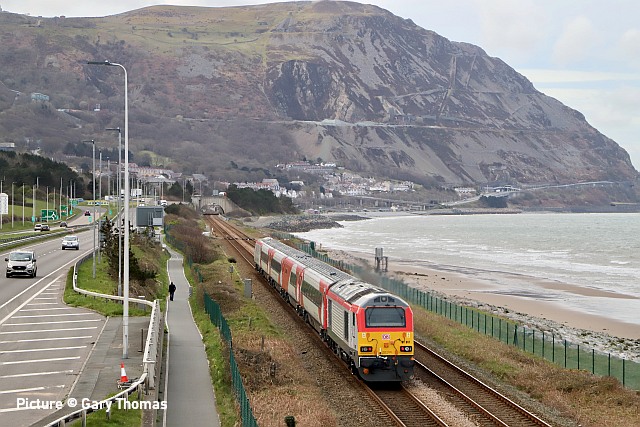
News pictures
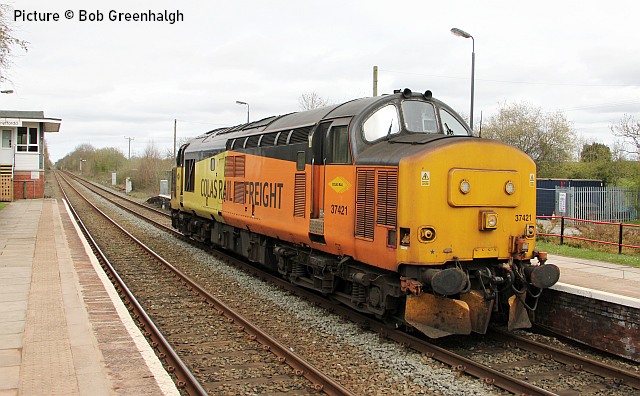
37 421 passes Penffordd on a training run, 7 April (Bob Greenhalgh).
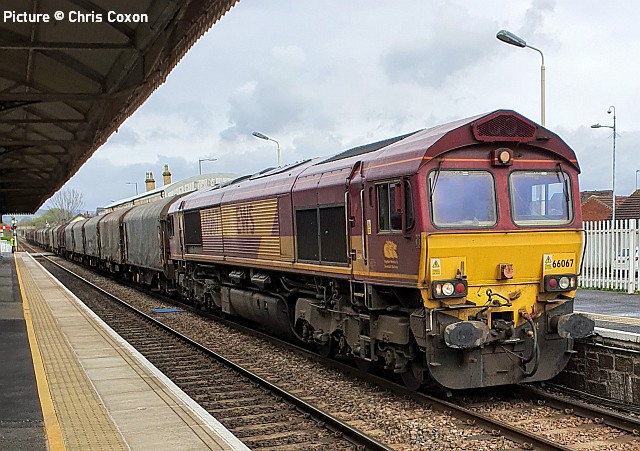
66 067 with steel wagons to Margam passing Gobowen 2 minutes
early at 10:18 on 9 April (Chris Coxon).
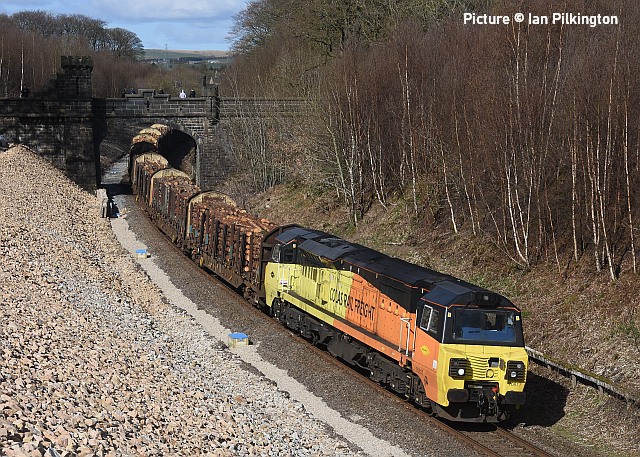
70 817 heads 6J37 Carlisle - Chirk logs cautiously down the 1 in 72 gradient past the ornamental bridge at Turton Tower on the Blackburn-Bolton line on Easter Monday 5 April. The train was diverted by this most unusual route due to an engineering blockade at Warrington, continuing onwards via Manchester Piccadilly and Crewe. The northbound empties used the same route on Easter Sunday. (Ian Pilkington).
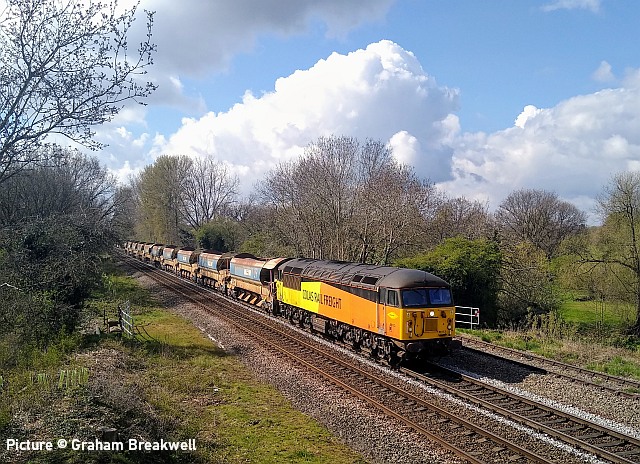
56 113 passes Kemp's Eye, Shrewsbury, on 11 April, returning to Crewe Basford Hall on the 10:45 autoballaster wagons from Cravens following overnight works between Dorrington and Marshbrook (Graham Breakwell).
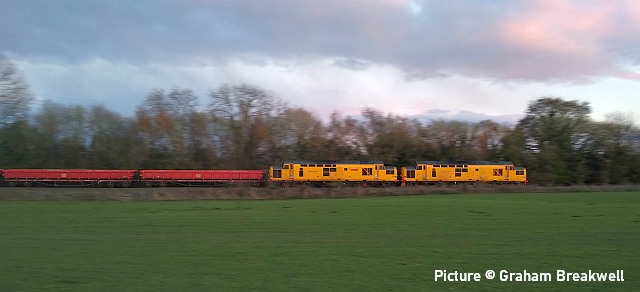
Catching the last of the evening sun on 11 April, 97 303 and 97 304 hurrying the 18:25 Crewe Basford Hall to Talerddig engineer's train past Redhill, on the single line from Sutton Bridge Junction to Welshpool.
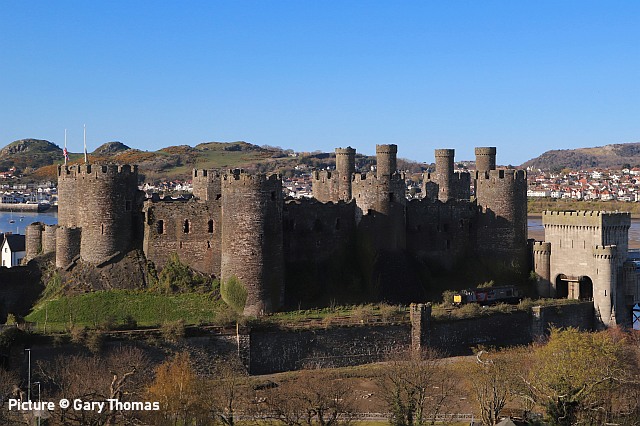
A contrast from ourheading picture, but the same loco - 37 800 passing Conwy Castle on 12 April (Gary Thomas).
Conwy Valley re-opens - report by Barrie Hughes
An Network Rail test train visited the Conwy Valley line on 23 March with 37 099 and 37 175 (3Q08 Crewe to Crewe via Llandudno and Blaenau Ffestiniog) in advance of reopening. Train services resumed on the Conwy Valley line for Easter from Monday 29 March.
This was after the train service had been disrupted by Storm Christophe's heavy continuous rainfall on 20 January which caused several washouts of the track on the Conwy Valley Line between Llandudno Junction and Blaenau Ffestiniog. This despite the several month's closure for 'resilience' repairs last year to future proof the line from the increasing incidence of storms. The route had been bustituted since late January.
There were a few cancellations on the first day due to staffing or stock availability and so the first train was the 16:17 from Llandudno and the 17:35 return. Two trains ran on 30 March in the morning and the service was restored to the standard four trains a day on 31 March,. allowing travel to work/shopping in Llandudno and back.
(Reproduced with permission from Barrie's Welsh Highland website)
45231's troubles - correction
Unfortunately, in the last issue we repeated a garbled version of what happened to LSL's special train on the Central Wales line. The train that encountered the trespassers was a normal passenger train, the 14:34 Swansea to Shrewsbury, which came upon two trespassers walking down the line from a far crossing south of Llandeilo. The driver took the train on to Llandelo station where there is a passing loop, but did not feel able to continue, and the train was terminated there.
45231 was declared a failure, reportedly with a severe wheel-flat, but as far as we know this was not related to the trespassing incident.
From Dave Sallery's archive
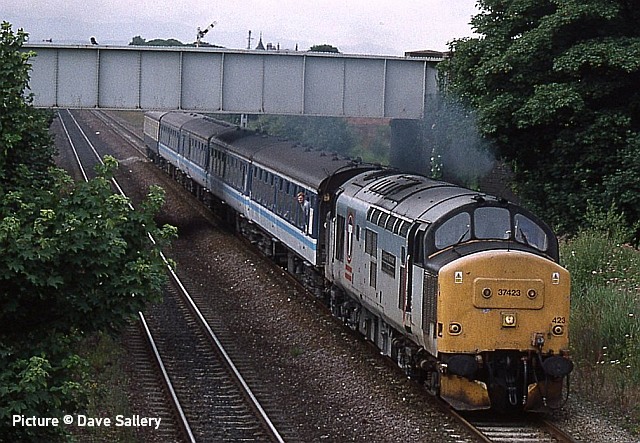
37 423 Sir Murray Morrison 1873-1948, Pioneer of the British Aluminium Industry during a short stint in North Wales: 15 July 1999.
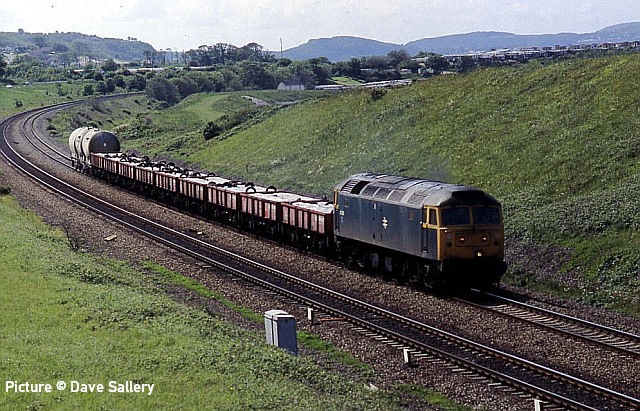
47 295 near Abergele with the Speedlink service to Warrington Arpley. Most of the wagons contain bricks, made in Caernarfon and loaded in Bangor goods yard. 12 June 1987.
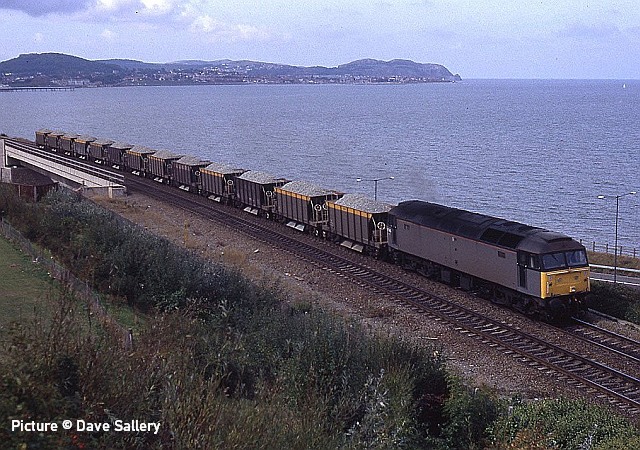
47 343 with ballast from Penmaenmawr, 10 September 1990.
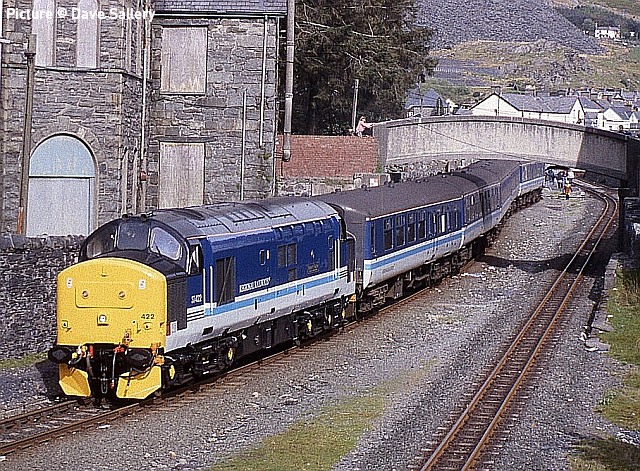
37 422 at Blaenau on the occasion of its naming ceremony as Robert F. Fairlie, 3 May 1993.
Looking back: Rhyl Miniature Railway part 2 - by David Pool
The Rhyl Miniature Railway was very successful before the First World War, and Albert Barnes, the Railway Manager of the owners Rhyl Amusements Ltd, asked Henry Greenly to design a new series of locomotives, based on the latter’s experience with the Bassett Lowke designs. They would be built at the Albion Workshops of A. Barnes and Company, the family business in Rhyl. The War then intervened, and the first locomotive of what Greenly called the Albion Class appeared in 1920. No. 101 Joan was an Atlantic similar to the Class 30, but generally larger and more powerful. Specifying a scale may be misleading, in that there is no clear full size prototype – the “one third full size” sometimes quoted is probably reasonable.
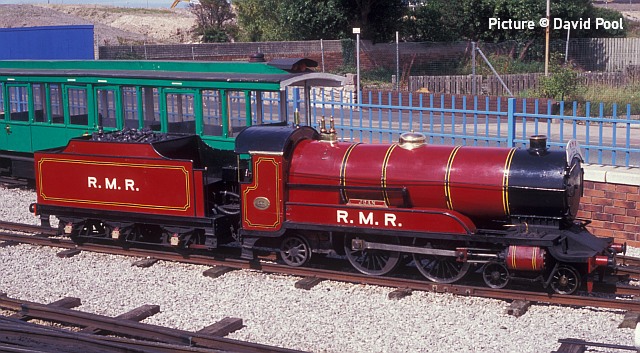
The photograph taken on 20 August 2011 shows Joan in one of the many RMR liveries. Can anyone clarify which liveries were used over the years?
Barnes continued to build the locomotives, the early ones being produced at intervals of 18 to 24 months. The same difficulties arise as with the Bassett Lowke locomotives, in that the build dates are uncertain and some names were re-used over the years. Many sources quote incorrect dates, particularly when a locomotive has had new owners, and John has been incorrectly shown as No.102 in at least one reference. Contrary to what is sometimes quoted, my understanding is that all six locomotives were built for the Rhyl Miniature Railway.
After a few years in service, and when a new locomotive was available, an old locomotive might be sold. This occurred twice, to Nos. 102 and 104. Many years later No.103 was also sold. The following names are accurate. The building dates are mostly best guesses, and last two in particular could be several years out. I would be very interested to hear of any corrections, with evidence which is more than just opinions.
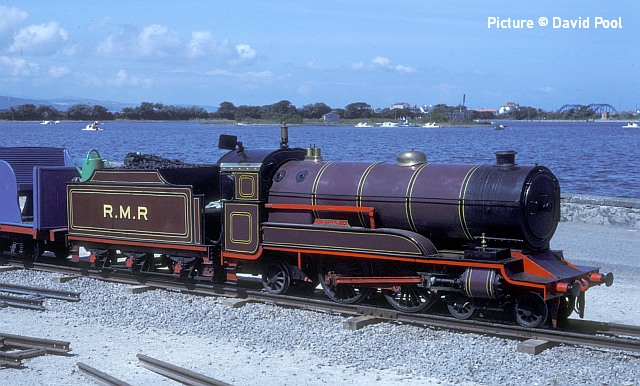
My photograph of Billy was taken on 15 July 1979.
101 Joan 1920
102 Michael 1921. Sold, then later renamed Railway Queen at Margate in 1928.
103 John 1922 Sold when Rhyl closed in the 1970s.
104 Billie 1923 Sold to Margate in 1924.
105 Michael 1927 The previous Michael had by then been sold.
106 Billy 1930 The previous Billie had by then been sold.
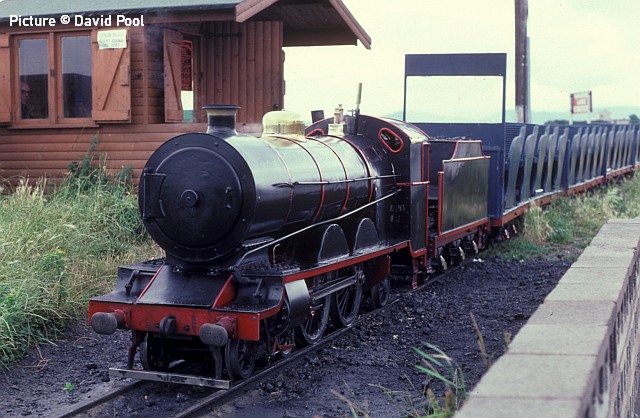
Locomotive No. 102 returned to Rhyl in the early 1980s, looking much as it did sixty years earlier. When I photographed it on 28 July 1985 it had been overhauled and repainted in black, the Railway Queen nameplate having been removed. The single splasher over the driving wheels had been replaced with individual splashers.
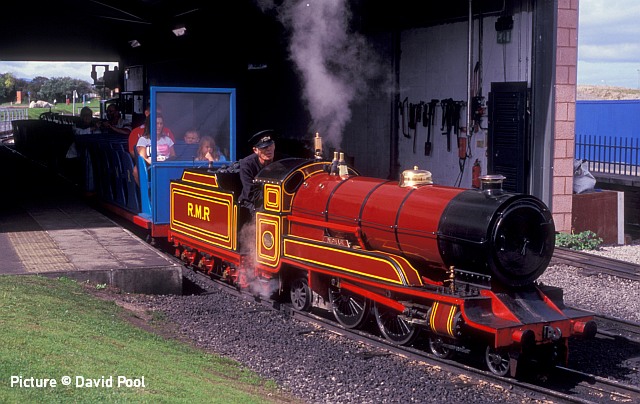
In more recent years, No. 105 Michael was photographed on 20 August 2011. The paint lining is striking, but in my opinion rather too garish. The new Central Station building was completed in 2007.

The steam locomotives are not always used outside the peak season, and trains are then usually diesel hauled by Clara. This locomotive was built by Trevor Guest in 1961 for the Dudley Zoo Railway. Eventually it was sold to Alan Keef, and arrived at Rhyl in 1978. A Leyland engine was fitted in 1996, and in 2011 it was rebuilt under the guidance of Alan Keef with a Perkins engine and hydraulic transmission. It was photographed on 14 July 2017.
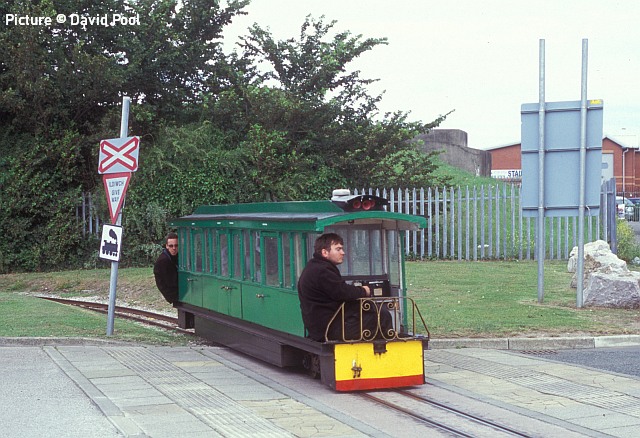
I knew there were no steam locomotives operating on the day of my visit, and had been hoping that the Saloon Railcar might be working. This had started life as two enclosed coaches built by Les Anderson in 1957/58 for the miniature railway at Severn Beach. They next moved to the Longleat Railway, where they were made into a single coach.
Several owners later, it was bought for the Blaise Castle Miniature Railway near Bristol, where in 1983 it was converted to a battery railcar, powered by a milk float motor. In 2003 it changed hands again, and arrived at Rhyl in 2004, where its American appearance fitted that of the Cagney steam locomotive. In 2007 however, new batteries were obtained, enabling it to work efficiently as a single unit railcar. The operating staff at Rhyl on 14 July 2017 were pleased to see my interest in the vehicle, and offered to give me (and my dog) a demonstration trip around the lake, which was much appreciated by us. Later I photographed the Railcar as it was making another circuit. The accommodation for the driver and guard is somewhat constricted!

At a Gala Day on 3 August 2019 double heading was being advertised, and this enabled trains to be lengthened to accommodate the extra passengers. The Bassett Lowke No.15 Prince Edward of Wales was paired with No.106 Michael, and the train comprised the Saloon Railcar and one of the new enclosed coaches, plus the usual open coaches. The height differences between the two coaches and the two locomotives are to be noted.
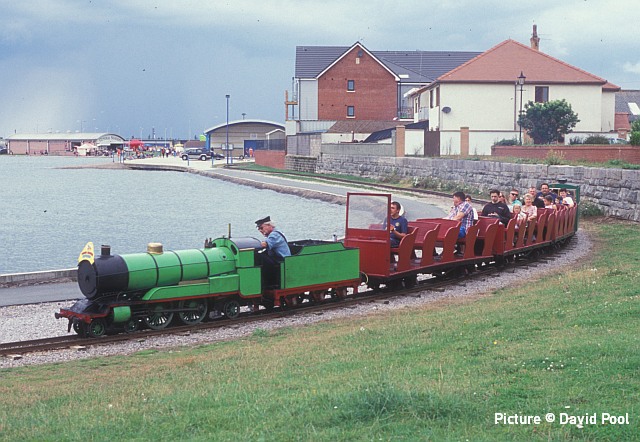
Later that day the passenger numbers had reduced, and No.102 Railway Queen was hauling a normal length train. Apart from the colour change, the single splashers have been replaced by the usual Barnes single splasher. Comparing this image with the one from 1985, it illustrates why the identification of a particular locomotive is often very difficult if names and nameplates are missing.
North Wales Coast home page | Archive | Previous Notice Board